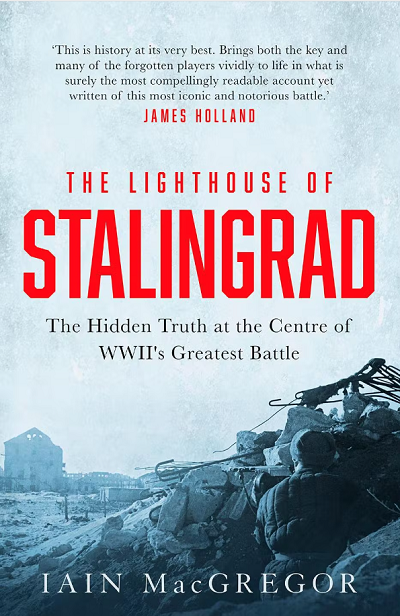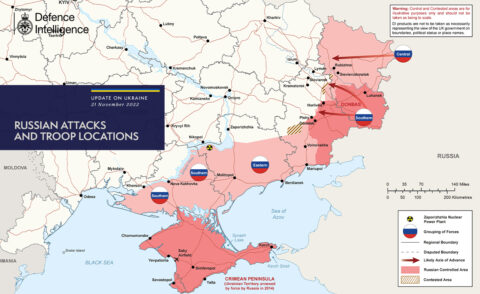 The degree to which we should understand the Roman habit of constructing fortified marching camps every night as exceptional is actually itself an interesting question. Our sources disagree on the origins of the Roman fortified camp; Frontinus (Front. Strat 4.1.15) says that the Romans learned it from the Macedonians by way of Pyrrhus of Epirus but Plutarch (Plut. Pyrrhus 16.4) represents it the other way around; Livy, more reliable than either agrees with Frontinus that Pyrrhus is the origin point (Liv. 35.14.8) but also has Philip V, a capable Macedonian commander, stand in awe of Roman camps (Liv. 31.34.8). It’s clear there was something exceptional about the Roman camps because so many of our sources treat it as such (Liv. 31.34.8; Plb. 18.24; Josephus BJ 3.70-98). Certainly the Macedonians regularly fortified their camps (e.g. Plb. 18.24; Liv 32.5.11-13; Arr. Alex. 3.9.1, 4.29.1-3; Curtius 4.12.2-24, 5.5.1) though Carthaginian armies seem to have done this less often (e.g. Plb. 6.42.1-2 encamping on open ground is treated as a bold new strategy).
The degree to which we should understand the Roman habit of constructing fortified marching camps every night as exceptional is actually itself an interesting question. Our sources disagree on the origins of the Roman fortified camp; Frontinus (Front. Strat 4.1.15) says that the Romans learned it from the Macedonians by way of Pyrrhus of Epirus but Plutarch (Plut. Pyrrhus 16.4) represents it the other way around; Livy, more reliable than either agrees with Frontinus that Pyrrhus is the origin point (Liv. 35.14.8) but also has Philip V, a capable Macedonian commander, stand in awe of Roman camps (Liv. 31.34.8). It’s clear there was something exceptional about the Roman camps because so many of our sources treat it as such (Liv. 31.34.8; Plb. 18.24; Josephus BJ 3.70-98). Certainly the Macedonians regularly fortified their camps (e.g. Plb. 18.24; Liv 32.5.11-13; Arr. Alex. 3.9.1, 4.29.1-3; Curtius 4.12.2-24, 5.5.1) though Carthaginian armies seem to have done this less often (e.g. Plb. 6.42.1-2 encamping on open ground is treated as a bold new strategy).
It is probably not the camps themselves, but their structure which was exceptional. Polybius claims Greeks “shirk the labor of entrenching” (Plb. 6.42.1-2) and notes that the stakes the Romans used to construct the wooden palisade wall of the camp are more densely placed and harder to remove (Plb. 18.18.5-18). The other clear difference Polybius notes is the order of Roman camps, that the Romans lay out their camp the same way wherever it is, whereas Greek and Macedonian practice was to conform the camp to the terrain (Plb. 6.42); the archaeology of Roman camps bears out the former whereas analysis of likely battlefield sites (like the Battle of the Aous) seem to bear out the latter.
In any case, the mostly standard layout of Roman marching camps (which in the event the Romans lay siege, become siege camps) enables us to talk about the Roman marching camp because as far as we can tell they were all quite similar (not merely because Polybius says this, but because the basic features of these camps really do seem to stay more or less constant.
The basic outline of the camp is a large rectangle with the corners rounded off, which has given the camps (and later forts derived from them) their nickname: “playing card” forts. The size and proportions of a fortified camp would depend on the number of legions, allies and auxiliaries present, from nearly square to having one side substantially longer than the other. This isn’t the place to get into the internal configuration of the camp, except to note that these camps seemed to have been standardized so that the layout was familiar to any soldier wherever they went, which must have aided in both building the camp (since issues of layout would become habit quickly) and packing it up again.
Now a fortified camp does not have the same defensive purpose as a walled city: the latter is intended to resist a siege, while a fortified camp is mostly intended to prevent an army from being surprised and to allow it the opportunity to either form for battle or safely refuse battle. That means the defenses are mostly about preventing stealthy approach, slowing down attackers and providing a modest advantage to defenders with a relative economy of cost and effort.
In the Roman case, for a completed defense, the outermost defense was the fossa or ditch; sources differ on the normal width and depth of the ditch (it must have differed based on local security conditions) but as a rule they were at least 3′ and 5′ wide and often significantly more than this (actual measured Roman defensive fossae are generally rather wider, typically with a 2:1 ratio of width to depth, as noted by Kate Gilliver. The earth excavated to make the fossa was then piled inside of it to make a raised earthwork rampart the Romans called the agger. Finally, on top of the agger, the Romans would place the valli (“stakes”) they carried to make the vallum. Vallum gives us our English word “wall” but more nearly means “palisade” or “rampart” (the Latin word for a stone wall is more often murus).
Polybius (18.18) notes that Greek camps often used stakes that hadn’t had the side branches removed and spaced them out a bit (perhaps a foot or so; too closely set for anyone to slip through); this sort of spaced out palisade is a common sort of anti-ambush defense and we know of similar village fortifications in pre- and early post-contact North America on the East coast, used to discourage raids. Obviously the downside is that when such stakes are spaced out, it only takes the removal of a few to generate a breach. The Roman vallum, by contrast, set the valli fixed close together with the branches interlaced and with the tips sharpened, making them difficult to climb or remove quickly.
The gateway obviously could not have the ditch cut across the entryway, so instead a second ditch, the titulum, was dug 60ft or so in front of the gate to prevent direct approach; the gate might also be reinforced with a secondary arc of earthworks, either internally or externally, called the clavicula; the goal of all of this extra protection was again not to prevent a determined attacker from reaching the gates, but rather to slow a surprise attack down to give the defender time to form up and respond.
And that’s what I want to highlight about the nature of the fortified Roman camp: this isn’t a defense meant to outlast a siege, but – as I hinted at last time – a defense meant to withstand a raid. At most a camp might need to withstand the enemy for a day or two, providing the army inside the opportunity to retreat during the night.
We actually have some evidence of similar sort of stake-wall protections in use on the East Coast of Native North America in the 16th century, which featured a circular stake wall with a “baffle gate” that prevented a direct approach and entrance. The warfare style of the region was heavily focused on raids rather than battles or sieges (though the former did happen) in what is sometimes termed the “cutting off way of war” (on this see W. Lee, “The Military Revolution of Native North America” in Empires and Indigines, ed. W. Lee (2011)). Interestingly, this form of Native American fortification seems to have been substantially disrupted by the arrival of steel axes for presumably exactly the reasons that Polybius discusses when thinking about Greek vs. Roman stake walls: pulling up a well-made (read: Roman) stake wall was quite difficult. However, with steel axes (imported from European traders), Native American raiding forces could quickly cut through a basic palisade. Interestingly, in the period that follows, Lee (op. cit.) notes a drift towards some of the same methods of fortification the Romans used: fortifications begin to square off, often combined a ditch with the palisade and eventually incorporated corner bastions projecting out of the wall (a feature Roman camps do not have, but later Roman forts eventually will, as we’ll see).
Roman field camps could be more elaborate than what I’ve described; camps often featured, for instance, observation towers. These would have been made of wood and seem to have chiefly been elevated posts for lookouts rather than firing positions, given that they sit behind the vallum rather than projecting out of it (meaning that it would be very difficult to shoot any enemy who actually made it to the vallum from the tower).
When a Roman army laid siege to a fortified settlement, the camp formed the “base” from which siege works were constructed (particularly circumvallation – making a wall around the enemy’s city to keep them in – and contravallation – making a wall around your siege position to keep other enemies out. We’ll discuss these terms in more depth a little later). Some of the most elaborate such works we have described are Caesar’s fortifications at the Siege of Alesia (52 BC; Caes. B.G. 7.72). There the Roman line consisted of an initial trench well beyond bow-shot range from his planned works in order to prevent the enemy from disrupting his soldiers with sudden attacks, then an agger and vallum constructed with a parapet to allow firing positions from atop the vallum, with observation towers every 80 feet and two ditches directly in front of the agger, making for three defensive ditches in total (be still Roel Konijnendijk‘s heart! – but seriously, the point he makes on those Insider “Expert Rates” videos about the importance of ditches are, as you can tell already, entirely accurate), which were reinforced with sharpened stakes faced outward. As Caesar expressly notes, these weren’t meant to be prohibitive defenses that would withstand any attack – wooden walls can be chopped or burned, after all – but rather to give him time to respond to any effort by the defenders to break out or by attackers to break in (he also contravallates, reproducing all of these defenses facing outward, as well).
Bret Devereaux, “Collections: Fortification, Part II: Romans Playing Cards”, A Collection of Unmitigated Pedantry, 2021-11-12.














